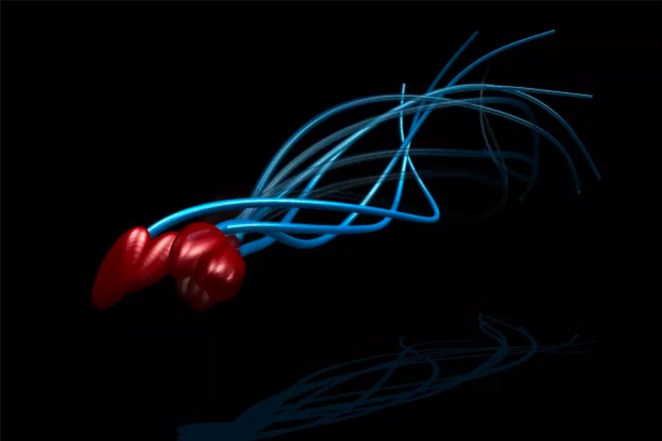Sperm swim ‘like playful otters corkscrewing’ toward egg, scientist says
The notion that sperm are joyfully tumbling and rolling toward the miracle of life is a fitting one.
But rather than oscillating from side to side like fish through the ocean, scientists have revealed that the male gamete actually twists and turns through space — not because they’re excited, but due to their lopsided cellular structure.
Cutting-edge 3-D microscopy, which can record over 55,000 frames per second, has now revealed the previously held belief about the undulating left-right motion of the flagellum was an optical illusion.
“Sperm are very cheeky little creatures,” said researcher Hermes Gadelha, who studies mathematics and fertility for the University of Bristol in the UK. He recently told CNN, “Our new research using 3-D microscopy shows that we have all been victims of a sperm deception.”
Dutch scientist Antoine van Leeuwenhoek was the first to discover spermatozoa when he very much deliberately observed his own ejaculate under the state-of-the-art microscope he’d recently invented over 340 years ago.
He told the UK Royal Society in 1678 that the “animalcules,” as he called them, “moved forward owing to the motion of their tails like that of a snake or an eel swimming in water.”

By essentially strapping a nano camera to the sex cell, researchers have discovered that the male reproductive cell actually only beats to one side, which might send them in circles if those relentless swimmers hadn’t figured out how to twist and paddle at the same time.
“Human sperm figured out if they roll as they swim, much like playful otters corkscrewing through water, their one-sided stroke would average itself out, and they would swim forward,” said study author Gadelha, whose team was so shocked by what they saw that they repeated their work over and over for two years to absolutely confirm their findings, which now appear in the latest issue of Science Advances.
“The rotation of the sperm is something that is very important. It’s something that allows the sperm to regain a symmetry and actually be able to go straight,” he said.
Their big question: Are some more agile than others, and does that have any bearing on the babies they create?
“It could be that the rolling motion hides some subtle aspects about the health of this sperm or how well it can travel quickly,” Gadelha said. “These are all very hypothetical questions. What we hope is that more scientists and fertility experts will become interested and ask, ‘OK, how does this influence infertility?’ ”
After debunking his predecessor, Gadelha still doesn’t believe we’ve yet discovered everything there is to know about human procreation.
“Who knows what we will find next?” he said. “This is a measurement given by an instrument that has its limitations.”
What’s next? Maybe those “cheeky” sperm giving each other high-fives, too?







